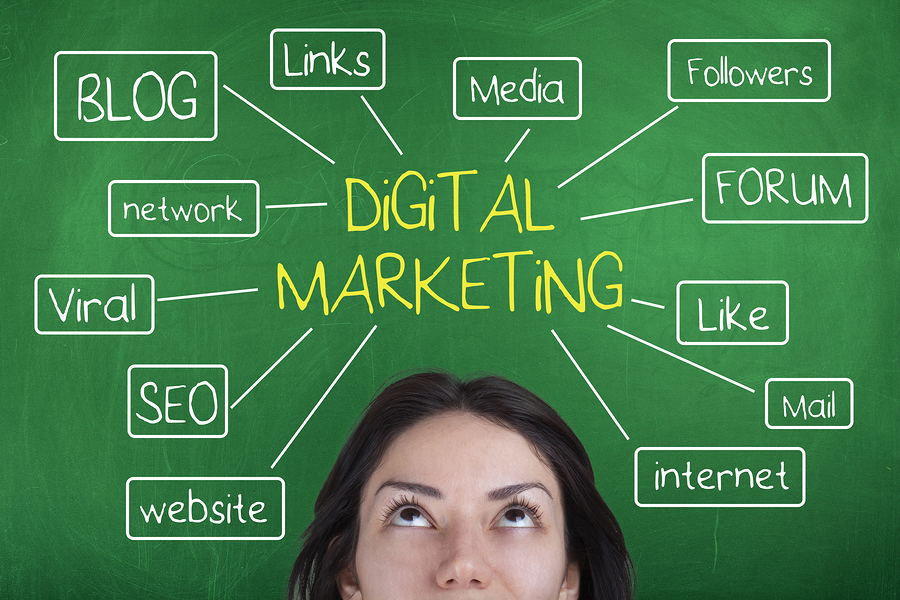Digital Marketing Tips for Small Businesses on a Budget

In today’s fast-paced digital world, small businesses often face the challenge of competing with larger, well-established brands that have hefty marketing budgets. However, the power of digital marketing can still level the playing field, enabling small businesses to attract attention, increase sales, and build their brand—all without breaking the bank. Whether you’re a startup or a small local business, here are some effective digital marketing tips you can implement on a budget to get the most out of your online presence.
1. Harness the Power of Social Media
Social media is one of the most cost-effective marketing channels available, offering immense opportunities to engage with your target audience and grow your brand. Platforms like Facebook, Instagram, Twitter, and LinkedIn allow businesses to connect with potential customers, share content, and even run targeted ads without large investments.
Tips:
- Choose the right platforms: Focus on the platforms where your target audience spends the most time. For example, Instagram is ideal for visual products, while LinkedIn works well for B2B businesses.
- Consistency is key: Post regularly and interact with your followers. Engaging with your audience helps build relationships and brand loyalty.
- Leverage user-generated content: Encourage satisfied customers to share their experiences and tag your business. This can help you build trust and authenticity without spending a dime.
2. Leverage Content Marketing
Content marketing involves creating valuable, relevant content that attracts and engages your target audience. It’s one of the most cost-effective methods for driving traffic to your website and establishing your brand as an authority in your industry.
Tips:
- Start a blog: Blogging is an excellent way to share helpful tips, product information, and industry news. Focus on topics that your customers are searching for and create high-quality, informative posts.
- SEO Optimization: Incorporate relevant keywords into your blog posts to improve their visibility on search engines like Google. This drives organic traffic to your website and increases your chances of being discovered.
- Repurpose content: Use existing content to create new forms. For example, turn a blog post into an infographic or create a video summarizing the key points.

3. Email Marketing: A Personal Touch
Email marketing remains one of the most effective ways to nurture relationships with your customers. By sending personalized emails to your subscribers, you can promote new products, offer exclusive discounts, and keep your audience engaged with your brand.
Tips:
- Build an email list: Start collecting emails through your website, social media, or in-store sign-ups. Offer something of value, like a discount or free resource, in exchange for an email address.
- Segment your audience: Tailor your messages based on customer behavior or preferences. Sending personalized content helps improve open rates and conversions.
- Use email marketing tools: There are affordable tools like Mailchimp or Sendinblue that allow you to create beautiful emails and track performance without breaking the bank.
4. Invest in Search Engine Optimization (SEO)
SEO is one of the most powerful long-term marketing strategies. By optimizing your website for search engines, you can increase organic traffic and rank higher in search results, helping potential customers find your business.
Tips:
- Optimize on-page SEO: This involves optimizing your website’s content, images, and meta tags for relevant keywords. Ensure that your website is mobile-friendly and has fast loading times to improve user experience.
- Local SEO: If you’re a local business, make sure your website is optimized for local searches. Claim your Google My Business listing and encourage happy customers to leave reviews.
- Content is king: Regularly update your website with fresh content that answers questions your audience may have. This not only boosts SEO but also keeps visitors engaged.
5. Use Affordable Paid Ads (When Necessary)
While organic marketing strategies are essential, sometimes investing in paid advertising can offer an immediate boost. Platforms like Google Ads and Facebook Ads allow you to set a budget that works for you, making it possible to reach a highly targeted audience without overspending.
Tips:
- Start small: Set a modest budget and run ads that target your most relevant audience. Facebook Ads, for example, allows you to target based on location, interests, and even behaviors.
- Use retargeting: Retargeting ads show your product or service to people who have previously visited your website. This keeps your business in front of potential customers and can significantly increase conversions.
- Track your results: Use tracking tools to monitor how your ads are performing. This allows you to optimize your campaigns and make adjustments to improve results.
6. Collaborate with Influencers or Local Partners
Collaborating with influencers or local businesses can be an effective way to expand your reach without spending large sums on traditional advertising. By working with micro-influencers or local partners, you can tap into their established audiences and build credibility.
Tips:
- Micro-influencers: These influencers typically have smaller but highly engaged followings. They may be more affordable and willing to collaborate in exchange for free products or services.
- Cross-promotions: Partner with other small businesses in your area or industry to cross-promote each other’s products or services. This could be as simple as sharing each other’s posts on social media or hosting joint events.
7. Use Free Tools to Enhance Your Marketing Efforts
There are plenty of free or low-cost digital marketing tools available that can help you improve efficiency and streamline your efforts. From social media scheduling tools to graphic design platforms, these resources can help you create professional content without the high costs.
Tips:
- Canva: A free tool for creating stunning graphics for social media, ads, or blog posts.
- Hootsuite or Buffer: Schedule and manage your social media posts from one platform, saving you time and ensuring consistency.
- Google Analytics: Track your website’s performance and gather insights into how visitors are interacting with your content, allowing you to make data-driven decisions.
Conclusion
Digital marketing doesn’t have to be expensive to be effective. With the right strategies and tools, small businesses can make a significant impact online. By focusing on social media, content marketing, email campaigns, and SEO, businesses can connect with their audience, build trust, and drive sales—all while staying within a tight budget. Remember, consistency, creativity, and optimization are key. By continually refining your approach, you’ll see long-term success and growth for your business.


